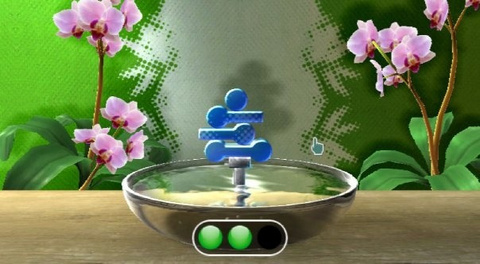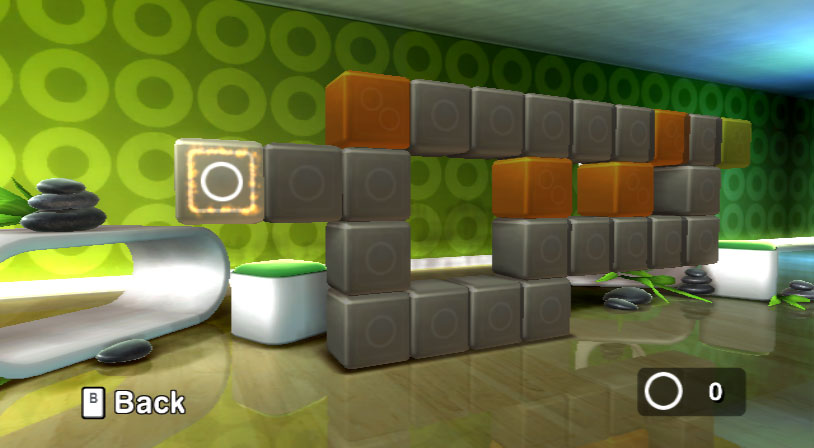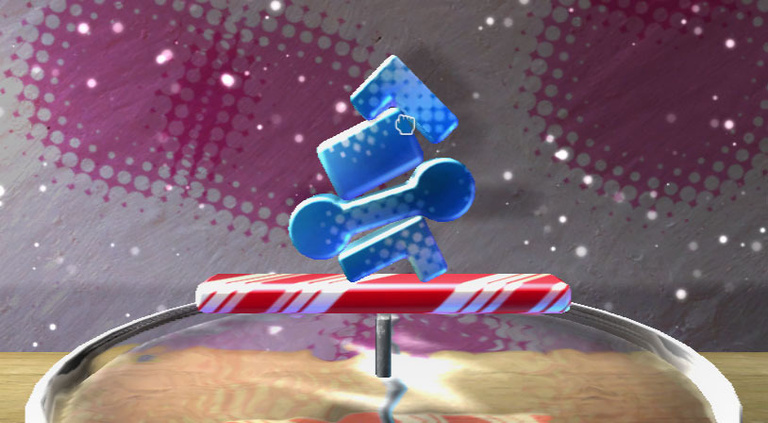 Let’s see if we can finish the year with a review of
another good WiiWare game! As I’ve proven multiple times in the past, a lot of
WiiWare games turn out to be, well… less than stellar. It appears that a
greater proportion of WiiWare titles are meh at best, horrible at worst. That’s
in part why I like the idea of trying out demos of certain games available
there. I would download all the available demos, try them out, and write a
little post about each on this site. In fact, there will be Demo Reviews throughout
all of December. However, there’s “trying” and then there’s “buying”. And one
month where I had some extra bucks, I went through the Wii Shop Channel. I was
looking for whatever WiiWare and Virtual Console games that looked interesting.
I finally chose to buy Art of Balance, a puzzle game for which a Demo had been made
available. I remembered liking the demo, so I told myself “hey, why not?” and
paid.
Let’s see if we can finish the year with a review of
another good WiiWare game! As I’ve proven multiple times in the past, a lot of
WiiWare games turn out to be, well… less than stellar. It appears that a
greater proportion of WiiWare titles are meh at best, horrible at worst. That’s
in part why I like the idea of trying out demos of certain games available
there. I would download all the available demos, try them out, and write a
little post about each on this site. In fact, there will be Demo Reviews throughout
all of December. However, there’s “trying” and then there’s “buying”. And one
month where I had some extra bucks, I went through the Wii Shop Channel. I was
looking for whatever WiiWare and Virtual Console games that looked interesting.
I finally chose to buy Art of Balance, a puzzle game for which a Demo had been made
available. I remembered liking the demo, so I told myself “hey, why not?” and
paid.
So, what are my final thoughts on this game?
…Oh wait, I’m too early for that.
Let’s start at the beginning: Art of Balance was
released by Shin’en Games in 2010. There are three versions of this game:
-The Wii one, which I am reviewing today;
-The 3DS one, adequately renamed Art of Balance Touch!
-And the Wii U version, also titled Art of Balance.
Yep. Same title for a game different from its predecessor. Is that confusing
enough for you? I mean, couldn’t it have been called Art of Balance U?
The full WiiWare title costs 800 points (thus
approximately 8$). Sure, this can be a bad thing if the game doesn’t offer
enough to justify its price (Looking at you, Pop-Up Pursuit), but from what
I’ve seen so far, this is an excellent price for a high-quality game. The full
game offers a hundred levels in its solo mode alone. And for a puzzle game,
that’s a good start.
When the game begins, you can choose between Arcade
and Versus. Arcade is the 1-Player mode, but you can play it cooperatively with
a friend, while Versus is (obviously) a multiplayer mode where you play to be
the quickest to solve each puzzle. Let’s start with Arcade, then I’ll discuss
Versus.
 |
| Four worlds to pick from? Sweet! What's that, the Wii U sequel has more? Holy wow! |
 |
| See? A whited out piece. |
 |
| Round pieces; the bane of the pile artist's existence. |
 |
| Please stay in place! |
-In one type of challenge, you must reach a certain
height with the pieces placed.
-In another, the stones aren’t there, and instead you
must build the pile on a pre-placed piece that will sway as more weight gets
put on it.
-In another, you have a time limit to place all of the
objects (the three seconds at the end to see if the pile stays in place doesn’t
count).
There are other examples, of course. Those award one more circle than regular levels.
 |
| Uh, give me a break...ing piece! |
Still not complicated enough? World C introduces
breakable blocks with a timer that begins as soon as you place another block on
top of them. And, for all of your greatest puzzle-solving pleasures, World D
combines the two types of breakable blocks! And adds lots of oddly-shaped
pieces with both flat and round surfaces, too! Taking everything into
consideration is what makes this the hardest World of the game. Not only do you
need to put the pieces at the right places, you also need to remember which
blocks will break after three pieces are placed on top of them, which blocks
will break shortly after another block is placed over them… all while trying to
keep the balance of the whole construct!
 |
| Even the level-selection screen looks soothing. |
While I’m at it, the physics also work very well. The
pieces act exactly the way they would in real life, if this game wasn’t on a
screen. Every slight movement caused by pieces shuffling around due to the
shape and weight of each can be seen, and thus every slide, every round edge,
every flat surface must be accounted for.
It’s true that I never got too mad at this game; for
some reason, I was always happy to complete levels, no matter how long they
took me. I dunno, my attitude when playing can be summed up like this:
“Okay, I put this piece here, that piece there… OK…
Now, um… This one! There, just perfect. Now, this one… right… there. Don’t
move… don’t move… don’t… move… Yes! Now, this one. Okay… Don’t move! Damn… Oh?
Eeeesh… Come on, don’t fall! Don’t fall… don’t fall… don’t fall…. YES! YES YES
YES! I DID IT! AWESOME!”
When you succeed, victory is too sweet to stay angry.
Maybe it’s got to do with the soothing music, or the overall ambiance. Either
way, that’s cool.
 |
| No, no, you're doing it wrong. Let me grab a third Wii remote and show you... what do you mean, maximum two players? |
So, I guess I’s time to finish this review. How’s Art
of Balance? Well… it’s a pleasant surprise! I mean, I already knew it was good,
but it turns out I really, really liked it!
It’s an addictive puzzle game. It’s a simple idea, but
it’s executed in such a way that numerous factors have to be taken into consideration:
The stones that serve as platform in the bowl, the varied (and often tricky)
shapes of the pieces, the flat surfaces, the round edges, the corners, the
eight directions in which a shape can be flipped, the type of challenge (if
applicable), the types of pieces (breakable or not, and the two types of
breakable blocks)… and that’s for all 100 levels! Now, most levels only have
one right answer, only one way to place all of the blocks, but some others may
have more than one answer – though sometimes it’s just a symmetric flip.
 |
| Okay, this is gonna come crashing down, quick. |
Thankfully, the relaxing ambiance, the soothing music
and the pretty backgrounds more than make up for the more unnerving aspects of
the game.
But of course, this wouldn’t be a review if I didn’t
have any points of criticism. For starters, you need incredible precision in
your movements with the Wii remote. Sometimes you cannot even make a single
mistake, and since it’s not all that easy to point with the remote and place
the piece exactly how you’d want it, you may end up having to try again. As an
example, let’s say you need a pile to remain balanced, and therefore you need
all pieces to be placed as much to the center as possible; if a sudden
movements results in you placing the piece just a bit too much to the left or
the right, and it falls off, you have to restart. Also, as shown in some of the
later levels, you often need to act quickly to place the pieces, in order to
prevent some of them from falling off due to having two sides of different
weight.
Another minor point of criticism is that the first
level of each world serves as a tutorial that explains the new challenges. You
cannot skip the tutorial. It’s fully voiced, so you have to wait for the sound
file to end, before you can start placing blocks. It’s especially annoying with
the first levels of Worlds C and D, which you ARE gonna have to restart a
couple times… and thus waste over 30 seconds passing through the same tutorial
over, and over, and over, and over again.
 |
| A game for those who cannot sit in a yoga pose without excruciating pain. |
And now, I officially announce the return of Demo
Reviews throughout all of December! Oh, but there will be other reviews as
well… in fact, I feel like looking at the two Just Dance titles I received in
the past 12 months… first Just Dance 2014, then Just Dance 2015, and then a
list of my favorite Just Dance levels! …and then possibly a list of the levels
I hate. We’ll see.
Bye!




No comments:
Post a Comment